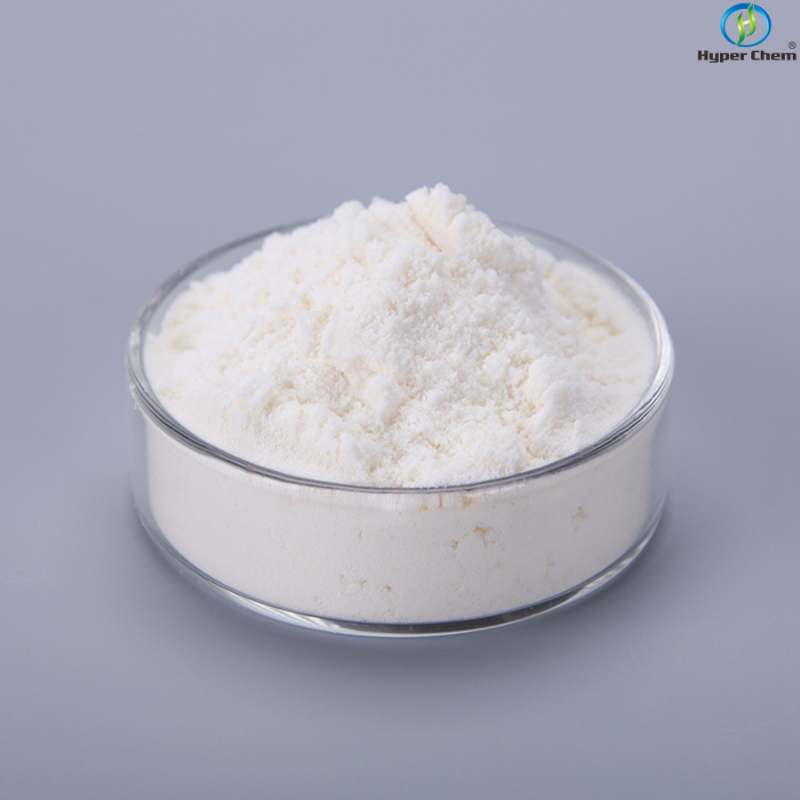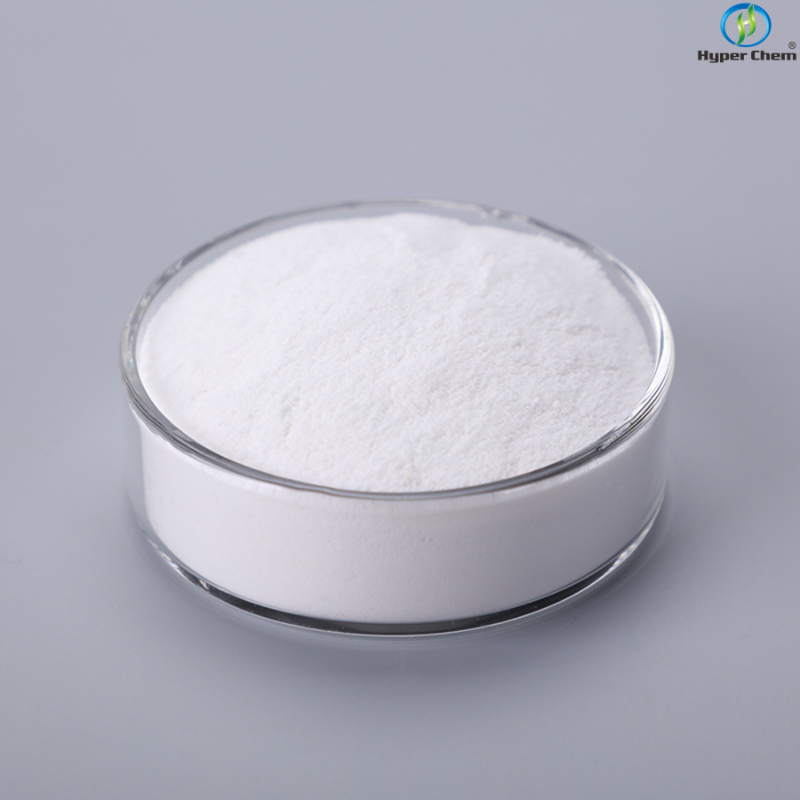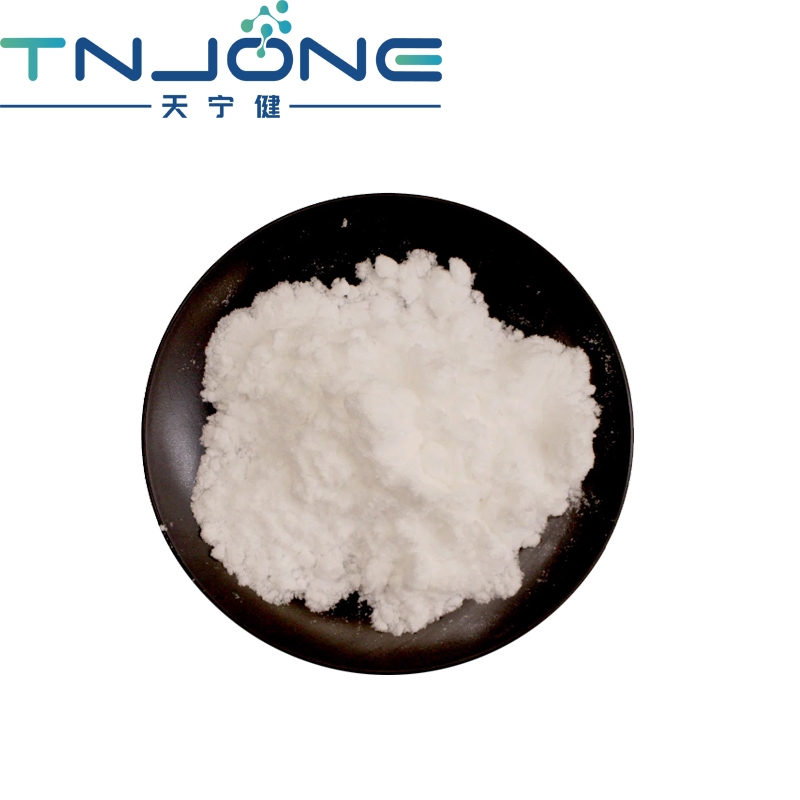-
Categories
-
Pharmaceutical Intermediates
-
Active Pharmaceutical Ingredients
-
Food Additives
- Industrial Coatings
- Agrochemicals
- Dyes and Pigments
- Surfactant
- Flavors and Fragrances
- Chemical Reagents
- Catalyst and Auxiliary
- Natural Products
- Inorganic Chemistry
-
Organic Chemistry
-
Biochemical Engineering
- Analytical Chemistry
-
Cosmetic Ingredient
- Water Treatment Chemical
-
Pharmaceutical Intermediates
Promotion
ECHEMI Mall
Wholesale
Weekly Price
Exhibition
News
-
Trade Service
▎WuXi AppTec content team editor Recently, an erythrocyte maturation agent, rotercept for injection (trade name: Librozer®), has been approved by the National Medical Products Administration (NMPA) of China for the treatment of needs Adult patients with beta-thalassemia who receive regular RBC transfusions and RBC transfusions ≤15 units/24 weeks
.
According to public information, the approval of rotacept for injection will bring a new treatment option for adult patients with β-thalassemia, which is expected to reduce the burden of blood transfusion in patients with transfusion-dependent β-thalassemia and reduce the iron overload caused by blood transfusion.
(This is a disorder of iron metabolism, which can affect bone marrow hematopoietic function, etc.
) risk, while relieving the status quo of blood source tension
.
Screenshot source: NMPA official website About β-thalassemia When it comes to anemia, many people may think that this is a "minor disease" and don't need to be concerned
.
However, β-thalassemia is different from the common anemia in daily life.
It is a hereditary blood disease caused by hemoglobin gene mutation.
It is characterized by ineffective hematopoiesis, which manifests as insufficient normal red blood cells produced by human hematopoiesis, resulting in severe anemia
.
Long-term anemic states often make patients debilitating and can lead to complications and other serious health problems
.
The "Clinical Practice Guidelines for β-thalassemia" pointed out that so far, more than 300 hemoglobin gene mutations related to β-thalassemia have been found in the world, but more than 90% of patients are caused by more than 40 mutations
.
Based on clinical phenotype and dependence on blood transfusions, individuals with beta-thalassemia are classified as: carriers, usually asymptomatic and body weight, with possible hematologic findings of mild microcytic hypochromic anemia (ie, red blood cells are small and central lightly stained area expanded)
.
Patients are divided into β-thalassemia intermediate and β-thalassemia major
.
The former usually develops after the age of 2, and manifests as moderate to moderate hemolytic anemia; the latter mostly occurs 3-6 months after birth
.
Southern China is one of the regions with the highest incidence of the disease in the world.
The three provinces with the highest β-thalassemia mutation carrier rate are Guangxi (6.
66%), Hainan (5.
11%) and Guizhou (4.
13%), Guangdong, Yunnan, Hunan, Jiangxi and other places are also relatively high
.
For the treatment of beta-thalassemia, patients rely on lifelong blood transfusions, iron removal therapy, or hematopoietic stem cell transplantation to stay alive
.
Without effective treatment, patients can cause a series of complications, including hepatosplenomegaly, special facial features (maxillary protrusion, zygomatic bulge, widened eye distance, nasal bridge collapse), osteoporosis, joint disease, developmental delay, Short stature, and anemia, heart disease,
etc.
Without blood transfusions, most patients will die of infection-induced heart failure by age 5-10
.
But repeated blood transfusions can lead to excess intestinal iron absorption, which can eventually lead to secondary iron overload
.
Excessive iron deposition in the myocardium, liver, spleen, kidney, pancreas, brain, bone marrow and other systemic tissues and organs can cause corresponding cell damage and organ failure
.
Complications related to iron overload can be avoided through active monitoring and timely iron removal therapy
.
Image credit: 123RF About rotsipro Rotecept is a soluble fusion protein composed of the Fc domain of human immunoglobulin G1 (IgG1) fused to the extracellular domain of activin receptor IIB (ActRIIB)
.
It can act as a ligand trap for TGF-β, preventing TGF-β from activating the Smad2/3 signaling pathway, thereby promoting the differentiation and maturation of advanced red blood cells and increasing hemoglobin levels
.
According to public information, the new mechanism of rotacept is expected to reduce the dependence of patients on blood transfusion and iron removal, reduce the time and frequency of patient visits, blood transfusions, and iron removal, and improve treatment compliance; at the same time, it can also avoid repeated blood transfusions.
Potential risk, reducing the risk of organ damage and death due to iron overload
.
The approval of Rottecept in China this time is based on a randomized, double-blind, placebo-controlled, multi-center global Phase 3 clinical trial called BELIEVE, which has 65 clinical trials in 15 countries.
A total of 336 adult patients with β-thalassemia who required regular blood transfusions were enrolled in the center
.
The patients were randomized 2:1 to receive rotacept + best supportive care (including blood transfusion, iron removal, anti-infective therapy and nutritional support) or placebo + best supportive care
.
The results of the study showed that from week 13 to week 24 of treatment, 21.
4% of patients in the rotercept group had a reduction in blood transfusion burden of more than 33% compared with the beginning of the study, which was significantly better than that in the placebo group (4.
5%); any 24-week period , the proportion of patients with a 33% reduction in transfusion burden in the rotercept group was 15 times that of the placebo group (41.
1% vs 2.
7%); at 48 weeks of treatment, the serum ferritin level in the rotercept group decreased by an average of 248 μg from baseline /L, compared with a mean increase of 107 μg/L in the placebo group; rotercept was well tolerated, and the vast majority of adverse events were grade 3 or lower
.
Image source: 123RF Currently, rotaxip is approved in the United States, Canada and the European Union for the treatment of adult patients with beta-thalassemia who require regular red blood cell transfusions, and in the United States and the European Union for the treatment of certain blood disorders of anemia
.
We expect that after the approval of rotacept for injection in China, it will come to patients as soon as possible, so that they can have new treatment options, reduce the incidence of anemia, iron overload and blood transfusion complications, and improve the quality of life of patients
.
Recommended reading of this common life-threatening virus, new anti-infection drugs improve survival of lymphoma patients, broad-spectrum anti-tumor drugs are approved to treat this blood system disease, TPO receptor agonists are approved to improve blood sugar control in adults ! A new type of oral hypoglycemic drug has been approved for marketing A quadrivalent meningococcal conjugate vaccine has been approved for marketing, which can be used under the age of 2! The sooner the disease can be prevented, the better.
Reference [1] Clinical Practice Guidelines Writing Group for Genetic Diseases, Chinese Medical Genetics Branch, (2020).
Clinical practice guidelines for β-thalassemia.
Chinese Journal of Medical Genetics, DOI: 10.
3760/ cma.
j.
issn.
1003-9406.
2020.
03.
004.
[2] On January 26, 2022, the drug approval document is pending information release.
Retrieved Feb 9, 2022, from https:// /sdxx/sdxxyp/yppjfb/20220126102728166.
html [3] Bristol-Myers Squibb’s innovative hematology drug Luspatercept received priority review by CDE.
Retrieved Feb 9, 2022, from https:// -1.
shtml[4] The world's first and only erythrocyte maturation agent Librose® was approved in China for the treatment of β-thalassemia.
Retrieved Feb 9, 2022, from https://mp.
weixin.
qq.
com/s /Fosz6DdLPNh5iq-_5TjVfg[5] Chinese Medical Association Hematology Branch/Chinese Medical Doctor Association Hematologist Branch.
Chinese expert consensus on the diagnosis and treatment of iron overload [J] (2011).
Chinese Journal of Hematology.
DOI: 10.
3760/cma.
j .
issn.
0253-2727.
2011.
08.
021.
Disclaimer: WuXi AppTec content team focuses on introducing global biomedical health research progress
.
This article is for information exchange purposes only, and the views expressed in this article do not represent WuXi AppTec's position, nor do they represent WuXi AppTec's support or opposition to the views expressed in this article
.
This article is also not a treatment plan recommendation
.
For guidance on treatment options, please visit a regular hospital
.
.
According to public information, the approval of rotacept for injection will bring a new treatment option for adult patients with β-thalassemia, which is expected to reduce the burden of blood transfusion in patients with transfusion-dependent β-thalassemia and reduce the iron overload caused by blood transfusion.
(This is a disorder of iron metabolism, which can affect bone marrow hematopoietic function, etc.
) risk, while relieving the status quo of blood source tension
.
Screenshot source: NMPA official website About β-thalassemia When it comes to anemia, many people may think that this is a "minor disease" and don't need to be concerned
.
However, β-thalassemia is different from the common anemia in daily life.
It is a hereditary blood disease caused by hemoglobin gene mutation.
It is characterized by ineffective hematopoiesis, which manifests as insufficient normal red blood cells produced by human hematopoiesis, resulting in severe anemia
.
Long-term anemic states often make patients debilitating and can lead to complications and other serious health problems
.
The "Clinical Practice Guidelines for β-thalassemia" pointed out that so far, more than 300 hemoglobin gene mutations related to β-thalassemia have been found in the world, but more than 90% of patients are caused by more than 40 mutations
.
Based on clinical phenotype and dependence on blood transfusions, individuals with beta-thalassemia are classified as: carriers, usually asymptomatic and body weight, with possible hematologic findings of mild microcytic hypochromic anemia (ie, red blood cells are small and central lightly stained area expanded)
.
Patients are divided into β-thalassemia intermediate and β-thalassemia major
.
The former usually develops after the age of 2, and manifests as moderate to moderate hemolytic anemia; the latter mostly occurs 3-6 months after birth
.
Southern China is one of the regions with the highest incidence of the disease in the world.
The three provinces with the highest β-thalassemia mutation carrier rate are Guangxi (6.
66%), Hainan (5.
11%) and Guizhou (4.
13%), Guangdong, Yunnan, Hunan, Jiangxi and other places are also relatively high
.
For the treatment of beta-thalassemia, patients rely on lifelong blood transfusions, iron removal therapy, or hematopoietic stem cell transplantation to stay alive
.
Without effective treatment, patients can cause a series of complications, including hepatosplenomegaly, special facial features (maxillary protrusion, zygomatic bulge, widened eye distance, nasal bridge collapse), osteoporosis, joint disease, developmental delay, Short stature, and anemia, heart disease,
etc.
Without blood transfusions, most patients will die of infection-induced heart failure by age 5-10
.
But repeated blood transfusions can lead to excess intestinal iron absorption, which can eventually lead to secondary iron overload
.
Excessive iron deposition in the myocardium, liver, spleen, kidney, pancreas, brain, bone marrow and other systemic tissues and organs can cause corresponding cell damage and organ failure
.
Complications related to iron overload can be avoided through active monitoring and timely iron removal therapy
.
Image credit: 123RF About rotsipro Rotecept is a soluble fusion protein composed of the Fc domain of human immunoglobulin G1 (IgG1) fused to the extracellular domain of activin receptor IIB (ActRIIB)
.
It can act as a ligand trap for TGF-β, preventing TGF-β from activating the Smad2/3 signaling pathway, thereby promoting the differentiation and maturation of advanced red blood cells and increasing hemoglobin levels
.
According to public information, the new mechanism of rotacept is expected to reduce the dependence of patients on blood transfusion and iron removal, reduce the time and frequency of patient visits, blood transfusions, and iron removal, and improve treatment compliance; at the same time, it can also avoid repeated blood transfusions.
Potential risk, reducing the risk of organ damage and death due to iron overload
.
The approval of Rottecept in China this time is based on a randomized, double-blind, placebo-controlled, multi-center global Phase 3 clinical trial called BELIEVE, which has 65 clinical trials in 15 countries.
A total of 336 adult patients with β-thalassemia who required regular blood transfusions were enrolled in the center
.
The patients were randomized 2:1 to receive rotacept + best supportive care (including blood transfusion, iron removal, anti-infective therapy and nutritional support) or placebo + best supportive care
.
The results of the study showed that from week 13 to week 24 of treatment, 21.
4% of patients in the rotercept group had a reduction in blood transfusion burden of more than 33% compared with the beginning of the study, which was significantly better than that in the placebo group (4.
5%); any 24-week period , the proportion of patients with a 33% reduction in transfusion burden in the rotercept group was 15 times that of the placebo group (41.
1% vs 2.
7%); at 48 weeks of treatment, the serum ferritin level in the rotercept group decreased by an average of 248 μg from baseline /L, compared with a mean increase of 107 μg/L in the placebo group; rotercept was well tolerated, and the vast majority of adverse events were grade 3 or lower
.
Image source: 123RF Currently, rotaxip is approved in the United States, Canada and the European Union for the treatment of adult patients with beta-thalassemia who require regular red blood cell transfusions, and in the United States and the European Union for the treatment of certain blood disorders of anemia
.
We expect that after the approval of rotacept for injection in China, it will come to patients as soon as possible, so that they can have new treatment options, reduce the incidence of anemia, iron overload and blood transfusion complications, and improve the quality of life of patients
.
Recommended reading of this common life-threatening virus, new anti-infection drugs improve survival of lymphoma patients, broad-spectrum anti-tumor drugs are approved to treat this blood system disease, TPO receptor agonists are approved to improve blood sugar control in adults ! A new type of oral hypoglycemic drug has been approved for marketing A quadrivalent meningococcal conjugate vaccine has been approved for marketing, which can be used under the age of 2! The sooner the disease can be prevented, the better.
Reference [1] Clinical Practice Guidelines Writing Group for Genetic Diseases, Chinese Medical Genetics Branch, (2020).
Clinical practice guidelines for β-thalassemia.
Chinese Journal of Medical Genetics, DOI: 10.
3760/ cma.
j.
issn.
1003-9406.
2020.
03.
004.
[2] On January 26, 2022, the drug approval document is pending information release.
Retrieved Feb 9, 2022, from https:// /sdxx/sdxxyp/yppjfb/20220126102728166.
html [3] Bristol-Myers Squibb’s innovative hematology drug Luspatercept received priority review by CDE.
Retrieved Feb 9, 2022, from https:// -1.
shtml[4] The world's first and only erythrocyte maturation agent Librose® was approved in China for the treatment of β-thalassemia.
Retrieved Feb 9, 2022, from https://mp.
weixin.
qq.
com/s /Fosz6DdLPNh5iq-_5TjVfg[5] Chinese Medical Association Hematology Branch/Chinese Medical Doctor Association Hematologist Branch.
Chinese expert consensus on the diagnosis and treatment of iron overload [J] (2011).
Chinese Journal of Hematology.
DOI: 10.
3760/cma.
j .
issn.
0253-2727.
2011.
08.
021.
Disclaimer: WuXi AppTec content team focuses on introducing global biomedical health research progress
.
This article is for information exchange purposes only, and the views expressed in this article do not represent WuXi AppTec's position, nor do they represent WuXi AppTec's support or opposition to the views expressed in this article
.
This article is also not a treatment plan recommendation
.
For guidance on treatment options, please visit a regular hospital
.







